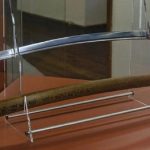If you are looking for the strangest looking creatures that live in the deep sea, Giant Isopod is amongst one surely. This is also a significant member of the isopod family. This is more like an insect but looks more gigantic.
20 facts:
(1) Giant isopod is crustaceans but not bugs. They are related closely to the sea crustaceans like crabs or shrimps.
(2) They are mostly like the terrestrial crustaceans, pillbug.

(3) They are known as Bathynomus giganteus and one of the nine members of Bathynomus family and widely known to the world.
(4) They live in the deep sea, between 550 to 7020ft. they usually like to stay in a clay or mud floor and burrow into it for shelter.
(5) They found mostly in the South China Sea and Japan (Pacific Ocean)
(6) They are really big in size and the size ranges between 7.5 inch and 14.2 inches in its length. But this is not the obvious length of the giant isopods and can get much bigger

(7) They have overlapping shells that you may find in two different colors, pale lilac and brown.
(8) They are the scavengers and they eat the dead animals and fall into the water from above but according to recent research they also eat the animals and moves slowly like sponges and they attack the trawl catches.
(9) They have a unique characteristic that they can live for several years without any food. According to research, even they can live 5 years or more than that without having any food.

(10) They come with four different sets of the jaws. These jaws may help them to tear and cut their prey. When they are really hungry, they need to have lots of food or prey around them to eat.
(11) They eat a huge quantity of foods at a time so they can go for starvation for a long They eat as much as they need to compromise with their capacity to move from one place to another. They are not aggressive to get foods.
(12) They have large but fixed-compound eyes. Their eyes have 4000 different facets. They basically have glowing eyes as they have tapeun at the back of their eyes that can reflect the light through their retina.

(13) They have excellent capability to see during the night time.
(14) But they have poor eyesight.
(15) To know the environment around the living area of the isopods, they use their two antennas. A small antenna is to sense the chemicals and the large one is for physical sense.
(16) Female ones come with the brood pouch at the undersides that can hold more than 30 eggs there.

(17) Male isopods have one small sized white appendage and the appendices. The first one is to carry the sperm in and the second one is to transfer that to females.
(18) They carry the largest eggs and the female isopods skip eating during the brooding period.
(19) The babies of the isopods come out also in larger size.
(20) They are not a commercial fishing item but you will often found it on the plate as with a rice dish in Northern Taiwan.









